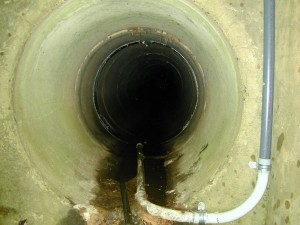Top 5 Reasons to Use CCTV for Pipeline Inspections
Published on September 30, 2014
Sewer lines require regular maintenance in order to properly function. Deterioration, blockages, and structure collapse are  always potential risks. When surveying pipe systems and aqueducts, closed-circuit television (CCTV) equipment provides significant benefits. CCTV inspections are:
always potential risks. When surveying pipe systems and aqueducts, closed-circuit television (CCTV) equipment provides significant benefits. CCTV inspections are:
-
Efficient
With technological advancements in video and recording, canvassing pipelines has never been easier or more efficient. Cameras offer real-time footage and can record continuously over the course of several days. Three common types of cameras are:
- Pipeline Inspection Gauge (PIG) mounted cameras – These recorders, along with LEDs, are attached to the cleaning gauges on a swiveling head and connected to the operator interface using a cable that’s wound upon a winch. PIG cams examine sewer passages without interfering in the product flow.
- Push cameras – These agile devices can be lowered down mainlines and then pushed into laterals for comprehensive viewing. One advantage they have over crawlers is their ability to fit into tubes smaller than six inches.
- Crawler cameras – These are controlled remotely. The operator remains in the mobile control station above ground while the camera crawls into the canals as directed.
-
Accurate
Blockages and drainage issues can cause extensive damage if they are not repaired in a timely manner. CCTV inspection gives you the ability to accurately view, record, and analyze any problem with an aqueduct. When using closed-circuit viewing, you’ll have access to:
- Multiple perspectives – Certain crawler models sport up to three separate cameras for a more complete picture.
- Digital documentation – Once you’ve started recording, your feed can be stored and logged in MPEG video and JPEG image formats, ensuring that no data is lost or incomplete.
- Clean and crisp visuals – High sensitivity cameras with powerful LEDs allow you to see farther and more clearly. Zoom features give you closer focus, both in live and recorded footage.
- Additional scanning options – Side scan imaging and laser dimensional scanning can give you a more detailed understanding of any damage or defects present.
-
Flexible and Versatile
CCTV inspection services can be used to locate and identify a wide variety of issues. Blockages or damage are the most common problems of sewer systems. Clogs can come from almost anything—food and cooking leavings, sanitary and hygiene products, litter scraps, yard waste debris, etc. Broken or misaligned pipes can also cause serious drainage complications that has to be replaced with pipes bought from www.ppspr.com/products/heat-exchangers/. Many aqueducts are comprised of multiple tube sections that feature connecting ends. Tree roots have been known to force their way into segment joints, especially in terra cotta or corroded cast iron. If you’re having problems with your septic system, a septic tank maintenance company may have to use cameras to pinpoint the source of the problem.
CCTV inspection can also be used to find missing items or old channels. This is beneficial in both commercial and residential systems, because aging or previously impeded lines may present expensive consequences for incoming owners in the future.
With a vast array of options, closed-circuit television equipment makes it easy for you to view the entire scope of any sewer you’re checking. When researching the right company and tools, look for features such as:
- Range – Many cams examine pipes of varying widths and lengths. They also sport long battery life for untethered use.
- Agility – 360 degree panning and 90 degree tilting allow you to see every angle of the canal interior. Adjustable camera height lets you control centerline viewing.
- Durability: Modern devices are lightweight, portable, rugged, and waterproof.
- Customization: Interface options grant you the ability to configure captured images, data reporting, and languages.
-
Cost Effective
CCTV inspection is highly valuable to pipeline system managers. As a method of “non-destructive testing,” experienced operators can conduct their investigations relatively quickly, and the tubes remain intact (apart from any present damage) throughout the process. Because the equipment is easily portable and controlled remotely, the required manpower is reduced, saving employment costs. Closed-circuit cameras also give specific, detailed information about the condition of the lines, saving time and guesswork and allowing crews to focus solely on the maintenance needed.
-
Safe
The Occupational Health and Safety Administration has very stringent regulations governing the methods by which workers enter and maintain sewer systems. However, no matter how many precautionary measures you take, passages are still potentially hazardous spaces. In some cases, entry is not feasible, due to dimension constrictions. In larger pipes, there is always the possibility of contamination from toxic gasses or hazardous waste, even after thorough testing. Using CCTV inspection equipment gets the job done, while simultaneously reducing risks to crews.
See For Yourself
If you’re concerned about drainage or sewage issues, or if it’s time for some routine, you may opt for preventative High-Pressure Line Jetting and septic cleaning maintenance. You can have confidence that closed-circuit television inspection services include everything you need to accomplish your goals.
Sources: